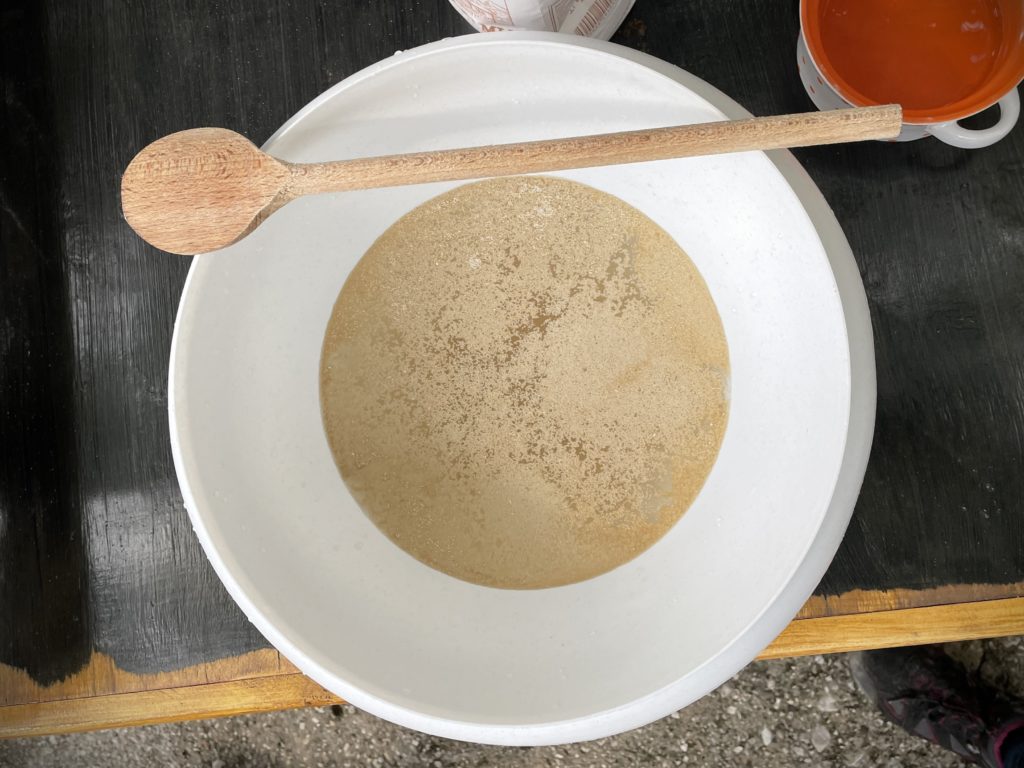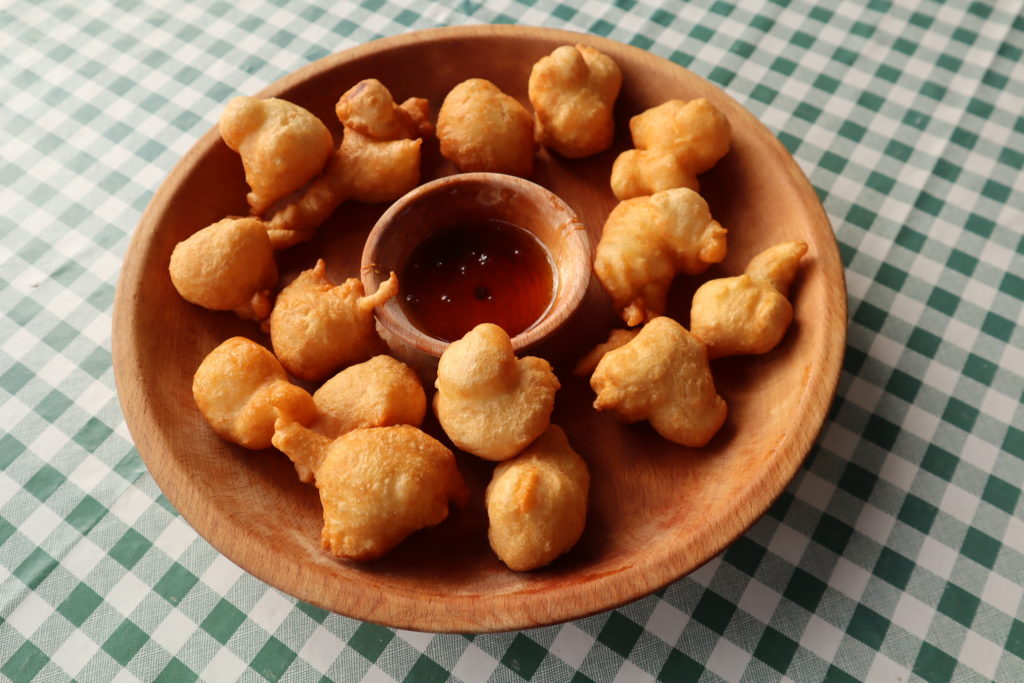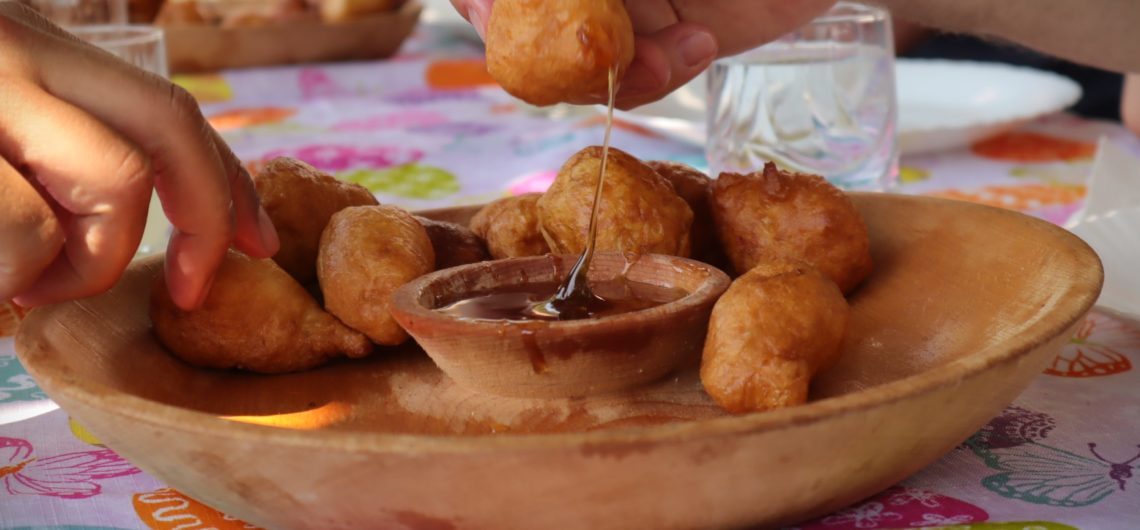This recipe for priganice dough balls is delicious!
Unexpected, delicious new foods are one of the best bits of travelling. One dish which continually delights and surprises our guests is ‘priganice’ (that’s the name for these dough balls in Montenegro, but every country in the Western Balkans has their equivalent, from uštipci in Serbia to petulla in Albania).
A main staple of any Balkan kitchen, these fritters are quick to whip up. Most often served at breakfast, priganice are equally good any time of day. Our friend Tanja, a talented cook, loves to serve them to our guests as a starter to a Montenegrin lunchtime feast, using them to showcase her family’s delectable home-produced honey.
The reaction is always one of glee when essentially doughnuts appear first on the table! It’s rare a single dough ball is left.
We’re often asked for the recipe for priganice, so without further ado, scroll down to find out how you can make perfect ones at home.
Of course, if you come on any of our adventures, we’ll happily arrange a cooking class with locals to perfect your technique! You can also pay close attention to the video we made below, in which Tanja gives priganice masterclasses to some of our Lake Skadar guests. If you just want to get to the recipe, scroll down.
Watch this video in which we take a priganice cooking class!
Here’s Tanja’s recipe for priganice
Serves 6-8 hungry people
Ingredients
Flour
Yeast
Sugar
Salt
Olive oil
Vegetable oil (for frying)
Instructions
1. Take a large mixing bowl and add some warm water to the bottom (about 2-3 fingers deep). The water flowing from Tanja’s taps and indeed most village taps in Montenegro is natural spring water, but mains water will do just fine.
2. Fill a wooden cooking spoon with yeast and add it to the bowl.

3. Add salt – enough to nearly fill one wooden cooking spoon.
4. Follow that with a heaped wooden spoon of sugar.
5. Then put in a couple of lugs of olive oil. In our neck of the woods, olive oil almost always comes from the ancient plantations around the coastal town of ‘Bar’, just the other side of the mountain from Lake Skadar. It’s a translucent yellow-green, tasty and extra rich in nutrients.
6. Allow the yeast to sink down below the water.
7. Then add flour (just under a kilo) and mix until it looks like a thick batter. Tanja was taught how to make priganice by her mother-in-law and to this day follows her instruction to be sure to stir in one direction only. When her mother-in-law learned this recipe, the flour she used would have come from one of the Ottoman mills dotted along the rivers of our neighbourhood, the flour taken to Virpazar market by donkey.

8. Cover and leave for half and hour for the yeast to work its magic.
9. Find a big pot or oven dish and line with kitchen towel to put the fried priganice in. Tanja’s was well-loved, as someone who has
10. Heat some vegetable oil in a medium size saucepan for deep frying and place the bowl of priganice batter next to it.
11. It’s time to make priganice! There are two techniques to it. (1) take a desert spoon of batter and then plonk it into the pan with your finger, aiming for a round shape. Add as many plonks of dough as can fit in the pan together. (2) grab a fist full of batter and squeeze a dollop through your thumb and first finger onto a desert spoon (this is messy but it’s Tanja’s preferred way and also mine – the balls ended up more, well, ball-like).
12. Fry, turning in the pan every so often, until golden all over.

13. Remove from the pan and place in the lined dish.
14. Allow to cool to a warm or room temperature.
15. Serve with organic honey and/or soft village cheese made from goats’ or cows’ milk. Feta works well if you can’t get your hands on some ‘domaći sir’.
Variations: you can dust the fried priganice with icing sugar, or before frying them, mix raisins and lemon peel into the batter and even some sprinkles of cinnamon.
Njam njam as we say in ex-Yu countries! I’d love to know how you get on with making priganice following Tanja’s recipe. Leave a comment to tell me.

A priganice cooking class is one of the fun local experiences we sometimes include on our Lake Skadar Multi-Activity Holiday, as featured in The Times and The Guardian. Visit our holiday product page to learn more!


Comments